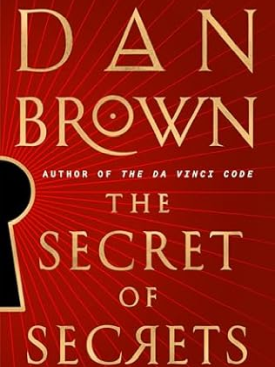Mervyn Peake Books In Order
Book links take you to Amazon. As an Amazon Associate I earn money from qualifying purchases.Publication Order of Gormenghast Books
| Titus Groan | (1946) | Description / Buy at Amazon | ||
| Gormenghast | (1950) | Description / Buy at Amazon | ||
| Titus Alone | (1959) | Description / Buy at Amazon | ||
| Titus Awakes | (1972) | Description / Buy at Amazon | ||
+ Show All Books in this Series | ||||
Publication Order of Standalone Novels
| Mr. Pye | (1953) | Description / Buy at Amazon |
Publication Order of Collections
| Ride a Cock-Horse and Other Nursery Rhymes | (1940) | Description / Buy at Amazon |
| Shapes And Sounds | (1941) | Description / Buy at Amazon |
| Rhymes Without Reason | (1944) | Description / Buy at Amazon |
| The Glassblowers | (1950) | Description / Buy at Amazon |
| Boy in Darkness and Other Stories | (1956) | Description / Buy at Amazon |
| The Rhyme of the Flying Bomb | (1962) | Description / Buy at Amazon |
| A Reverie of Bone and other poems | (1967) | Description / Buy at Amazon |
| A Book of Nonsense | (1972) | Description / Buy at Amazon |
| Selected Poems | (1972) | Description / Buy at Amazon |
| Mervyn Peake | (1975) | Description / Buy at Amazon |
| Writings & Drawings | (1975) | Description / Buy at Amazon |
| Twelve Poems 1939 - 1960 | (1975) | Description / Buy at Amazon |
| Peake's Progress | (1978) | Description / Buy at Amazon |
| Collected Poems | (2008) | Description / Buy at Amazon |
| Peake Plays | (2011) | Description / Buy at Amazon |
| Complete Nonsense | (2011) | Description / Buy at Amazon |
Publication Order of Picture Books
| Captain Slaughterboard Drops Anchor | (1939) | Description / Buy at Amazon |
Publication Order of Short Stories/Novellas
| Letters from a lost uncle | (1948) | Description / Buy at Amazon |
| Boy in Darkness | (1956) | Description / Buy at Amazon |
Publication Order of Non-Fiction Books
| The Craft of the Lead Pencil | (1946) | Description / Buy at Amazon |
| Drawings | (1949) | Description / Buy at Amazon |
| Figures of Speech | (1954) | Description / Buy at Amazon |
| The Sunday Books | (2006) | Description / Buy at Amazon |
Publication Order of Anthologies
Mervyn Peake
Mervyn Peake was an English author of fantasy, fiction, and poetry books. He’s famously known for his Gormenghast series, which lasted four books. Even though only three Gormenghast books were published during Mervyns’ life, he had always wanted to publish more, but bad health and tragic death prevented him. The fourth book in the series was completed by his wife, Maeve Gilmore, from the rough note left by her husband. Mervyn’s work sometimes been compared to J.R.R. Tolkien, but his freakish fiction was mostly influenced by his love for Robert Louis Stevenson and Charles Dickens rather than Tolkien’s studies of philology and mythology.
He also wrote literary nonsense and poetry in verse form, stage and radio play, short stories for both adult and children, and Mr. Pye, a tightly structured book in which God utterly mocks the ways of the eponymous hero.
Only six volumes of Mervyn’s work were published during his lifetime, and others published posthumously. Several of the author’s work has been adapted for radio dramatizing and television. In 2000 WGBH Boston and the BBC co-produced a miniseries titled Gormenghast, which is based on the first three books in the series. The series starred Jonathan Rhys-Meyers, June Brown, Neve McIntosh, Christopher Lee, Ian Richardson, and others.
Titus Groan
Titus Groan is the first book in the Gormenghast series by Mervyn Peake. It’s the story of Titus Groan, the 77th Early of Gormenghast and that of his eccentric family, their workers, and the kingdom of Gormenghast. It covers from the moment Titus is born to his inauguration as the 77th Earl and everything that happens in the kingdom during that time. The events that lead leads to his early Earling involve greed, betrayal, madness, murder, and revenge. In addition there are touches of subtle humor and real-life affection.
The beginning of the novel certainly hooks your attention from the first page as the story kicks off outside Gormenghast walls and draws you with the birth of the main character to his unconventional mother. The story flows fantastically well with the help of characters such as Flay, who, at times acts as unwitting guide to the readers throughout the story. Other main characters in the novel are the Groan family. Their dysfunctional relationship is evident through their relationship with the servants and other subjects. Central to all these events is Steerpike, a brave and opportunistic kitchen porter who wants a way out and uses the insecurities and mistrust in Groan’s family to his advantage. He is also interested in Lady Fuchsia who while attracted to him is also suspicious of him. The story is narrated in the third-person perspective, and this allows the characters and the events to unfold simultaneously.
Titus Groan’s novel is, in most cases classified as fantasy but reads more like historical fiction with a spice of magical realism. This first book has a profound sense of place and time. The main plot relates to the birth of Titus, the heir to the house of ancient Groan. When examined carefully, this is a richly imagined tale in an enclosed world that’s choking under the weight of detailed but largely pointless arcane ritual. It also explains how a cunny, Steerpike, quickly climbs up the ladder from an orphan kitchen man to rebel, then opportunist to a schemer, carefully plotting his rise to power. The novel also contains a subplot regarding Keda, a woman living in the mud hut outside the castle where Bright Carvers live.
This is a true page-turner, though the plot at time slows down because the descriptions are vividly done. The author, at times meanders through lengthy diversions and conjures strange metaphors, which will surely improve your vocabulary, though even the strange worlds are used carefully to allow the reader to get the gist if you don’t have a dictionary at hand. There are gruesome episodes, as the author isn’t afraid to kill off famous characters in bad ways. There are also moments of wonder, humor, mystery, and almost total darkness.
Mervyn Peake’s artistic eye is evident in well detailed visual descriptions, especially masonry, skin and candle wax. Probably that’s the reason why carvings are a big deal in Gormenghast: there’s an annual competition explained at the start of the novel, the rivalries are so fierce, and the carver’s talents are the only reason the dwellers are allowed so near to the castle. For a few chapters throughout the novel, the narration switches to the present.
Mr. Pye
Mr. Pye is a 1953 standalone novel by Mervyn Peake. The main character is Mr. Pye, who travels to the Channel Island of Stark to awaken his love of God in all the islanders. The landlady on the island Miss Dredger soon becomes his avid follows and agrees to allow the one person she has always hated, Miss George to live in her house. As Mr. Pye does his excellent work he feels a stinging feeling on his back, and upon further investigations, he discovers that he’s grown angel’s wings. He consults Harley Street doctor, who informs him that the best thing to prevent the wings from growing is to stop doing good deeds and instead do bad deeds.
He engages in some deliberate malicious acts, but this results in more serious problems- growing horns on his forehead. Unable to decide what to do next, Pye eventually decides to reveal his horns to the islanders, who chase him to the edge of a cliff. Sark is a real island located in the English channel, where Peake lived for a time hence formed a real solid presence in the novel, almost becoming a character itself, though a passive one. The eponymous Pye was an evangelist who referred to God as a Pal who wants to unite a community divided by small differences. In contrast, although Mervyn Peake’s parents at a missionary hospital, he was never religious at all even though Peake’s wife was religious. Mr. Pye was adapted into a radio play in 1957 by the author broadcasted by the BBC. It was a 60-minute play produced by Francis Dillon. In 1986, the book was also adapted as a four-part miniseries, which was aired on Channel 4.
Book Series In Order » Authors »


 Any issues with the book list you are seeing? Or is there an author or series we don’t have? Let me know!
Any issues with the book list you are seeing? Or is there an author or series we don’t have? Let me know!